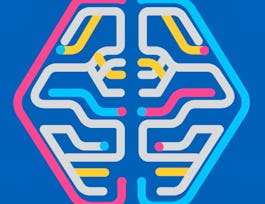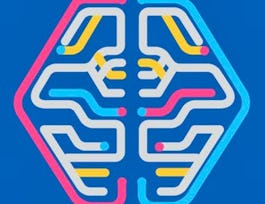This course covers designing and building a TensorFlow input data pipeline, building ML models with TensorFlow and Keras, improving the accuracy of ML models, writing ML models for scaled use, and writing specialized ML models.

TensorFlow on Google Cloud
This course is part of multiple programs.
Taught in English

Instructor: Google Cloud Training
47,493 already enrolled
Included with 
Course
(2,745 reviews)
89%
What you'll learn
Create TensorFlow and Keras machine learning models and describe their key components.
Use the tf.data library to manipulate data and large datasets.
Use the Keras Sequential and Functional APIs for simple and advanced model creation.
Train, deploy, and productionalize ML models at scale with Vertex AI.
Details to know

Add to your LinkedIn profile
4 quizzes
Course
(2,745 reviews)
89%
See how employees at top companies are mastering in-demand skills

Build your subject-matter expertise
- Learn new concepts from industry experts
- Gain a foundational understanding of a subject or tool
- Develop job-relevant skills with hands-on projects
- Earn a shareable career certificate


Earn a career certificate
Add this credential to your LinkedIn profile, resume, or CV
Share it on social media and in your performance review

There are 6 modules in this course
This module provides an overview of the course and its objectives.
What's included
1 video
This module introduces the TensorFlow framework and previews its main components as well as the overall API hierarchy.
What's included
4 videos1 reading1 quiz
Data is the a crucial component of a machine learning model. Collecting the right data is not enough. You also need to make sure you put the right processes in place to clean, analyze and transform the data, as needed, so that the model can take the most signal of it as possible. In this module we discuss training on large datasets with tf.data, working with in-memory files, and how to get the data ready for training. Then we discuss embeddings, and end with an overview of scaling data with tf.keras preprocessing layers.
What's included
10 videos1 reading1 quiz2 app items
In this module, we discuss activation functions and how they are needed to allow deep neural networks to capture nonlinearities of the data. We then provide an overview of Deep Neural Networks using the Keras Sequential and Functional APIs. Next we describe model subclassing, which offers greater flexibility in model building. The module ends with a lesson on regularization.
What's included
10 videos1 reading1 quiz2 app items
In this module, we describe how to train TensorFlow models at scale using Vertex AI.
What's included
3 videos1 reading1 quiz1 app item
This module is a summary of the TensorFlow on Google Cloud course.
What's included
4 readings
Instructor

Offered by
Recommended if you're interested in Machine Learning

Google Cloud

Google Cloud

Google Cloud
Why people choose Coursera for their career




Learner reviews
Showing 3 of 2745
2,745 reviews
- 5 stars
61.98%
- 4 stars
24.90%
- 3 stars
8.95%
- 2 stars
2.58%
- 1 star
1.56%
New to Machine Learning? Start here.

Open new doors with Coursera Plus
Unlimited access to 7,000+ world-class courses, hands-on projects, and job-ready certificate programs - all included in your subscription
Advance your career with an online degree
Earn a degree from world-class universities - 100% online
Join over 3,400 global companies that choose Coursera for Business
Upskill your employees to excel in the digital economy
Frequently asked questions
Yes, you can preview the first video and view the syllabus before you enroll. You must purchase the course to access content not included in the preview.
If you decide to enroll in the course before the session start date, you will have access to all of the lecture videos and readings for the course. You’ll be able to submit assignments once the session starts.
Once you enroll and your session begins, you will have access to all videos and other resources, including reading items and the course discussion forum. You’ll be able to view and submit practice assessments, and complete required graded assignments to earn a grade and a Course Certificate.
